 April 26: To be, is to be inside a film; a skin, inside everything else.
April 26: To be, is to be inside a film; a skin, inside everything else.
Patricia Conde Galería, Gral. Juan Cano 68, San Miguel Chapultepec I Secc, Mexico City, 11850 opens an exhibition by Flor Garduño, Memorias del presente, tonight, continuing until 25th May, while in the UK, Roman Road, 69 Roman Road, London opens MDAM, an exhibition by duo Mia Dudek and Alix Marie, two recent graduates from the Royal College of Art, London.
Are there connections between Mexican Flor Garduño (*1957), now 60, and the French and Polish artists, both 28, who are almost two generations younger? All three happen to be simultaneously exhibiting today.
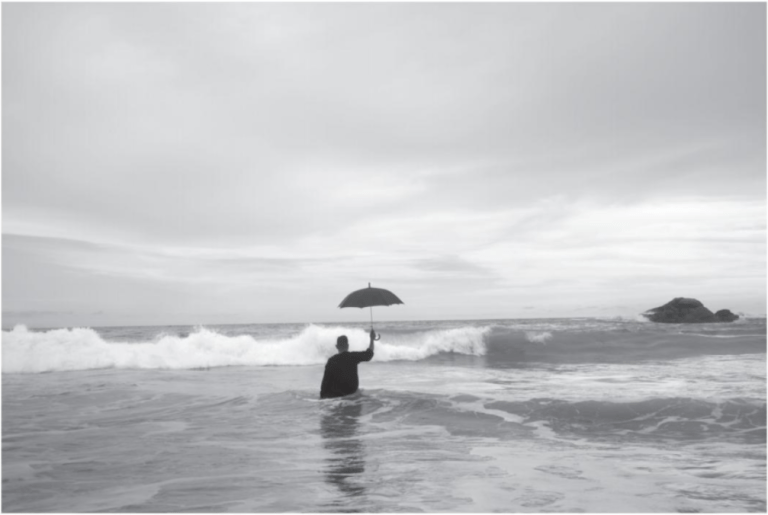
Studying at the San Carlos School of Fine Art in 1977, Flor Garduño had intentions to concentrate on drawing. Then she encountered an extraordinary photographer Kati Horna (whom we shall look at in detail on May 19, her birthday). The Hungarian, who had become a naturalised Mexican, was a war photographer who had lost most of her work in the Spanish Civil War. She explored surrealism, feminism and class in Mexico. She became Garduño’s mentor, teaching her how to explore issues and themes…and visions…

Garduño was lucky to have a second influence; Manuel Álvarez Bravo, who was then returning to the public from obscurity, self-imposed since 1959 when he founded the Fondo Editorial de la Plástica Mexicana with Leopoldo Méndez, Gabriel Figueroa, Carlos Pellicer and Rafael Carrillo to produce books on Mexican art, on which he spent most of the 1960s. In the 1970s his work was being widely exhibited again, most significantly at the Pasadena Art Museum and the Museum of Modern Art in New York in 1971, and the two years Garduño was assisting him in his darkroom culminated in his solo show at the Corcoran Gallery of Art in Washington in 1978.
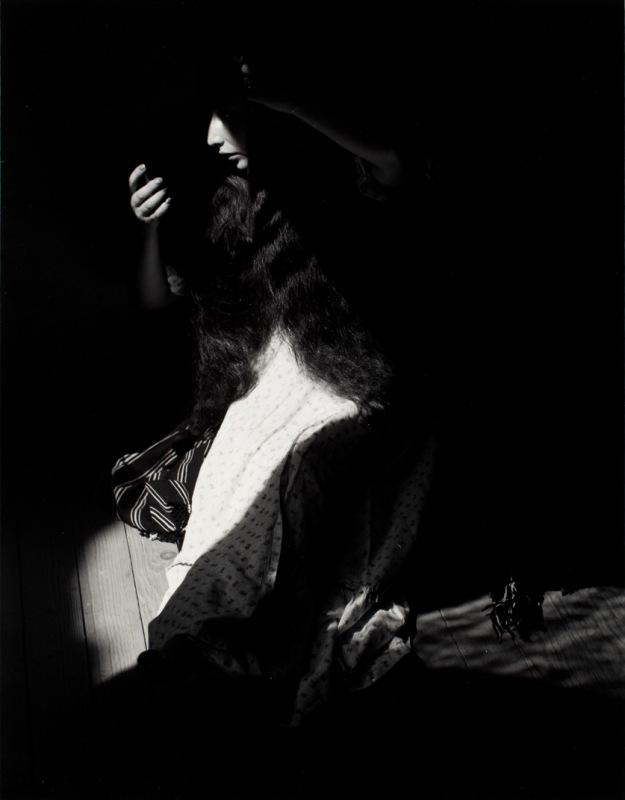
From him Garduño learned discipline and persistence and, she said, “about being systematic and a critic of my own work…I perfected my skills at the darkroom, and on weekends, we used to make photography side by side.”
With these influences, a natural tendency toward the magic realism of her heritage was assured, and Flor Garduño still continues to explore nature, dreams, and the female form, using light and shadow.

As in Canasta de Luz, Garduño deals with Latin-American themes and mythology to reflect her “personal, interior landscape.” Surrealist and dream-like, her works recall ancient rituals and a powerful feminism that she has inherited from Horna, the war photographer.
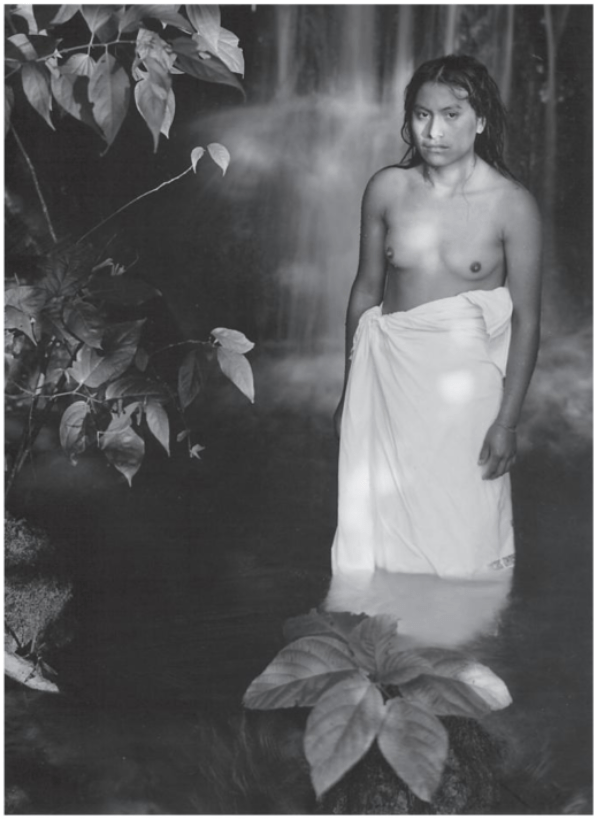
The oldest works from in Patricia Conde Galería’s survey show, like this brooding portrait, date from this same period, the earliest made not 6 years after Garduño’s encounters with Horna and Bravo and after it had resolved into a form still recognisable in works made by her last year; a remarkable consistency of vision that has not faltered.
Though she might imitate the work of those in which she finds a similar poetic intensity, as in this homage to Edward Hopper, she refines it from her own passions; the bed becomes the unyielding glassy slab of troubled sleep, the pillow a bundle, and the girl’s shadow accompanies her watchfully. The sunless buildings through the painstakingly copied window frame more directly continue the perspective of the ‘bed’ and accelerate the space compellingly.
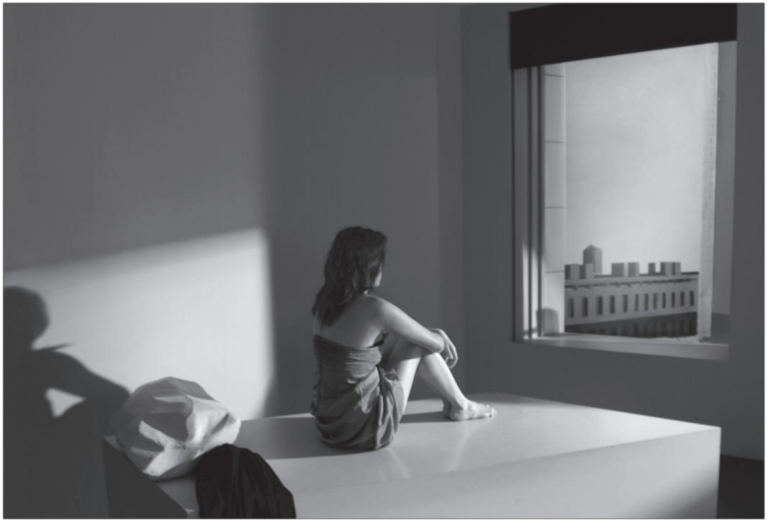
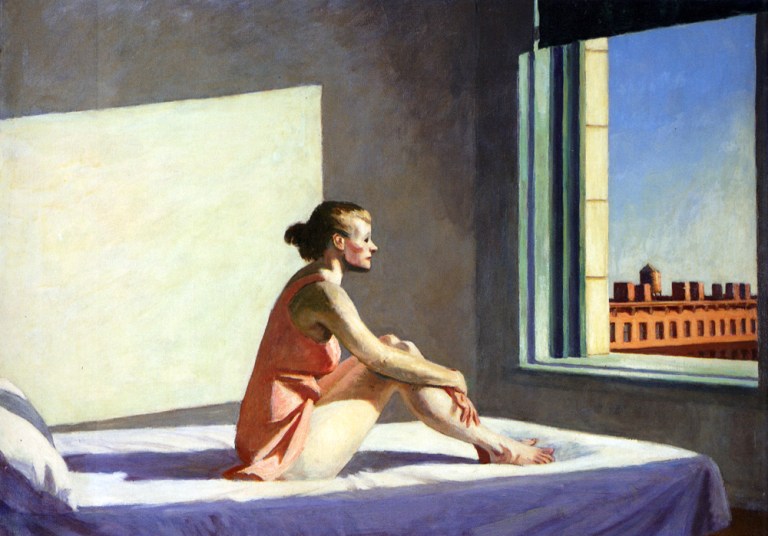
Abrazo de Luz is a commentary on the name of the artist, ‘Flor’ being a flower, which coupled with ‘Garduño’, which means a petty thief or pickpocket, is materialised in this figure who ‘Embraces Light’…who, taking ‘abrazo’ literally, acts out a passionate desire.
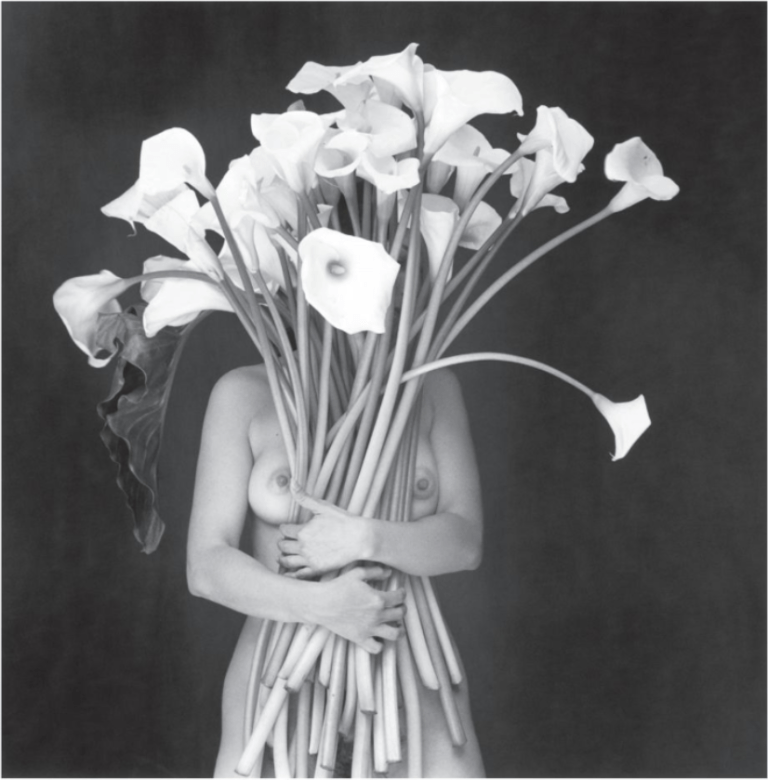
When in another, more recent embrace, disembodied carnivalesque hands clasp a photograph of a girl in traditional dress to a lacerated tree trunk, floods of psychological associations are let loose.
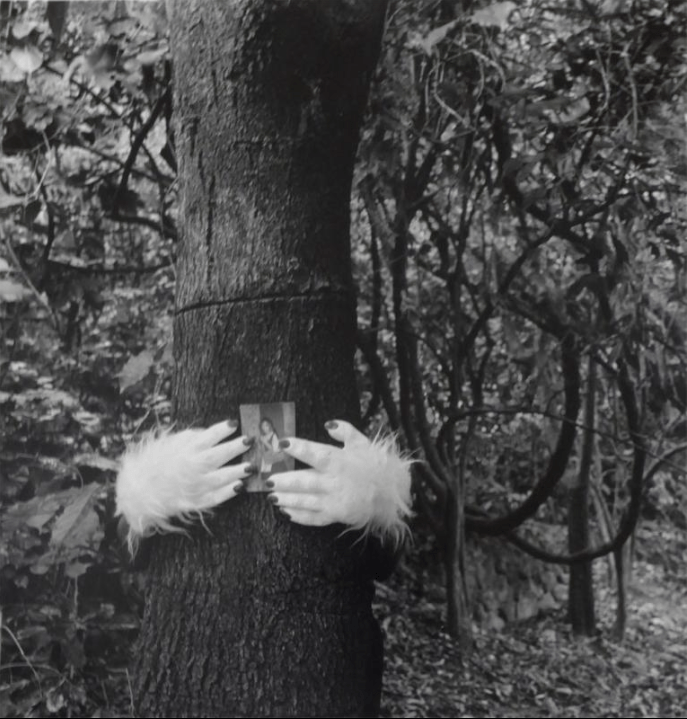
But ultimately in Flor Garduño’s realm the feminine triumphs.
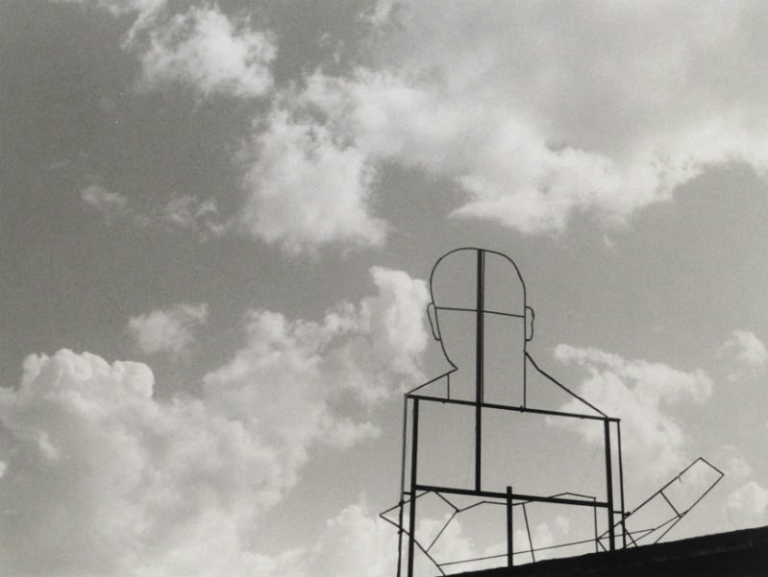

Mia Dudek (*1989) employs both still photography and video in setting the vitality of the body into the soulless surrounds of the mass housing constructions that abound both in London and in her home country of Poland.


Dudek does not hide the vulnerability that her subjects must feel in these forbidding nocturnal environments; there is a nervous vibration that sets up the hairs, both of model and viewer. Hers is the gritty reality that is glossed over in Garduño’s imagery and which here adds a frisson, reinforced by the cold flourescent gleam that reflects from the warm skin.
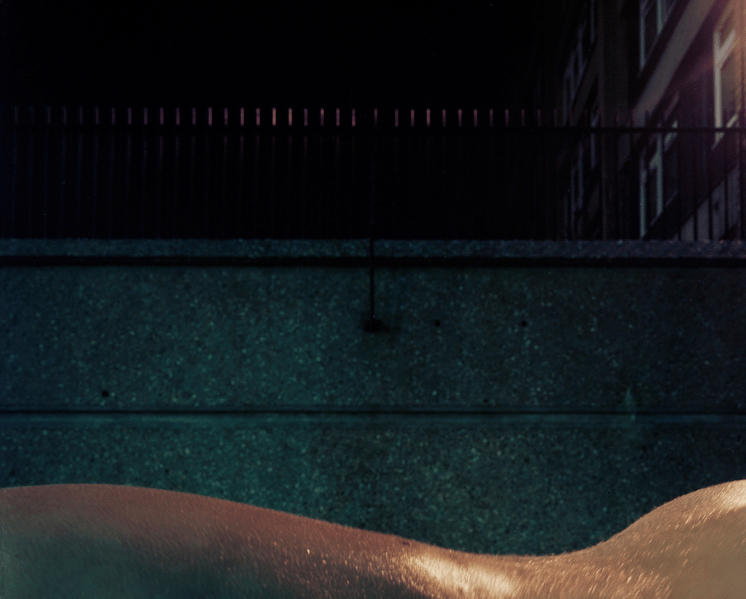
It is an understanding that is reinforced and confirmed in viewing Dudek’s brutalist sculptural installations in which she stuffs a skin-coloured membrane into steel mesh fencing, or stretches it over sharp metal edges.
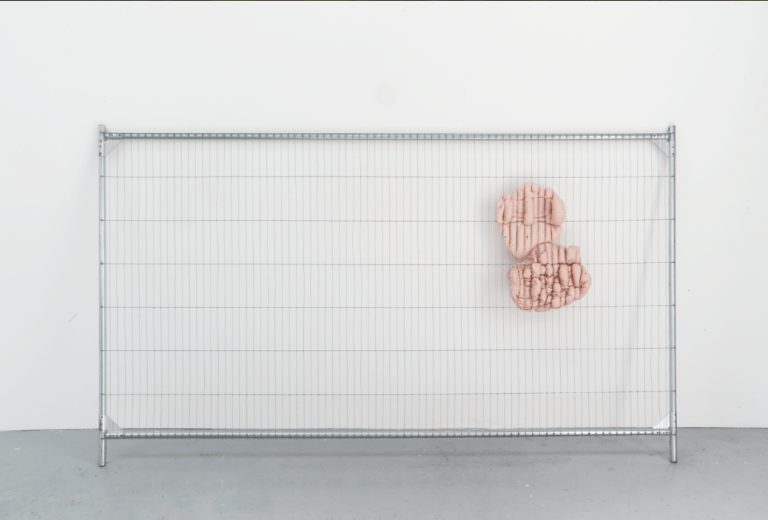
In her associated silent video, the naked subject is illuminated intermittently with flares of flash and LED lighting, and it lingers in close-up as the model’s pulse and breath tighten and loosen her skin. Urban alienation and isolation are sensations in her work in each of these media, and in the exhibition the photographs she uses will be installed at sculptural scale for a site-specific interaction by the audience.
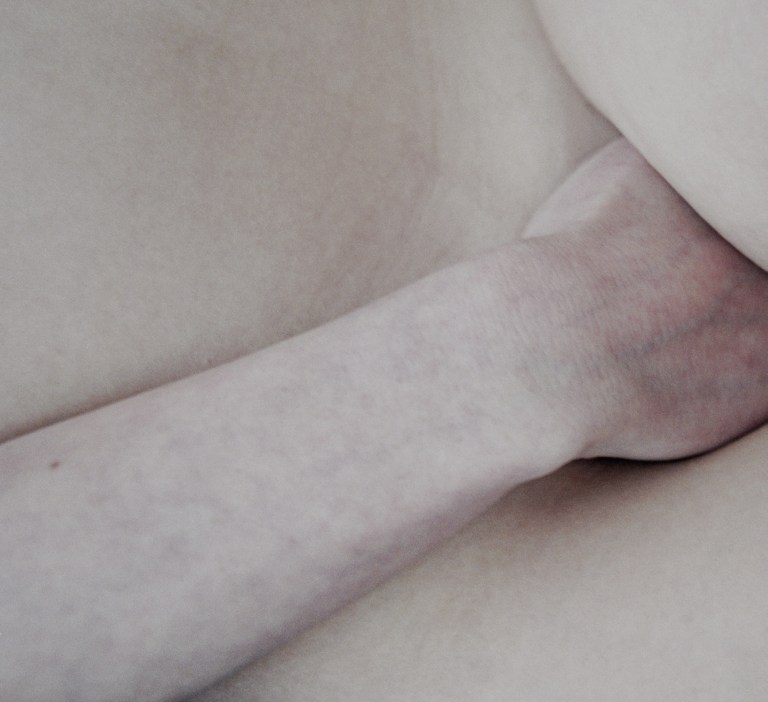
Dudek’s companion in this joint exhibition is fellow Royal College graduate Alix Marie, who is equally concerned with skin, but inspects its surfaces for traces of interactions with the world and with other skin, real or artificial. In her previous exhibitions, photographic prints, like flayed human hide, are draped slackly over steel racks or enlarged so that their texture vividly transforms interior spaces into the moist orifices and openings of human anatomy.
The mimetic nature of photography has been imitated sculpturally in Marie’s use of casts in concrete of human body parts, and for this show she shows both photographs and latex casts derived from Japanese sex toys. In reference to developments in technology toward artificial sex, in Pharmacopornographic Relic (2017), Marie builds on a photographic/pornographic interrelationship by using chemicals used to process photographic film, growing a double dildo out of photographic bleach crystals, mixing wetting agent (used to reduce water marks when drying negatives) with the water that spurts from one of her sex toy constructions.
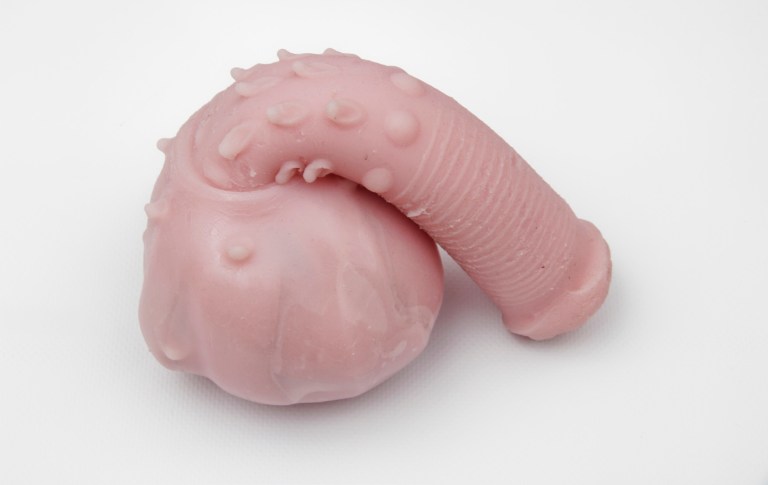
The two combine forces to deconstruct sex in a post-gender world in which automatons may rub though and erase the embedded binary of thick-skinned patriarchal stereotypes and oppositions.







